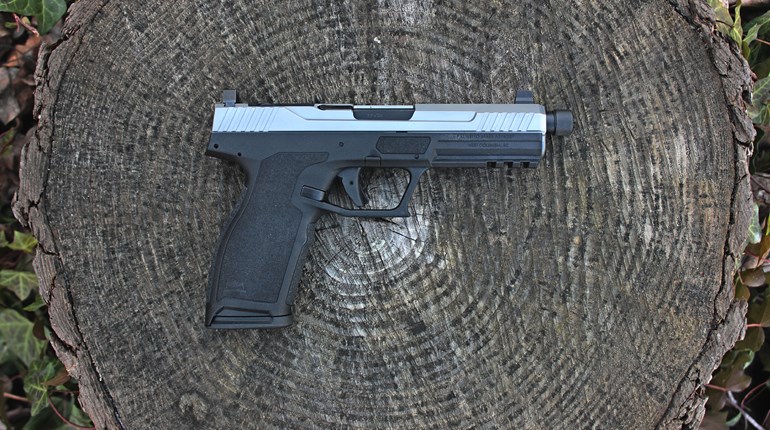
After much rumination you finally bought a new handgun—a Kimber Ultra-Carry II in .45 ACP. You’re stoked about it, but it was a splurge at $1,200, so you resist the salesman’s pitches to buy the expensive ammo. Instead you buy two boxes of American Eagle FMJ ammo at $14 apiece. Back at the casa you load your magazines and place the gun in your bedside safe and call yourself ready. But you’re not.
At a bare minimum, buy four more boxes of the American Eagle, then two boxes (25 rounds) of an ultra-premium hollowpoint load such as Hornady Critical Defense, Winchester PDX1, Federal Premium Personal Defense Hydra-Shok, Speer Gold Dot, Corbon DPX or others. You’ll pay $20 to $40 per box, but this is the ammo that will save your life if it’s ever called upon. So bite the bullet and buy it. Here’s why:
In my first year out of college I spent my entire monthly paycheck on a then-top-of-the-line Springfield 1911 TRP. It felt like a samurai sword in this suit-ninja’s hand. The spring was so tight I could barely rack it. Man was it awesome … until I shot it. It jammed at least once per magazine with premium ammo. After 50 rounds I called the company. Customer service explained what I have since learned via experience: Nearly all semi-automatics, and especially all-metal, ultra-premium guns like Kimber’s 1911s that have very tight manufacturing tolerances, require a break-in period of at least 200 rounds. Four hundred is better. It’s not uncommon to have a half-dozen or more malfunctions in the first 100 rounds with these new guns. It’s not a flaw, but is to be expected. The break-in period allows the metal-on-metal edges to smooth each other out, springs to flex and parts to expand slightly, allowing the firearm to come into its own, like a good pair of boots. While polymer-framed guns may not require as long of a break-in period, they still need it. And some guns are just finicky. Don’t wait to figure this out until you need the firearm to save your life.
To save money as well, break in the gun with the inexpensive loads. Just remember that “ball,” or full-metal-jacket ammo feeds much better than hollowpoint ammo that can more easily hang up on the feed ramp, so you’ll still need to test your premium stuff. Between each magazine, during cleaning—heck, all the time—vigorously work the slide. After 200 rounds, if you have problems, shoot 200 more. After 400 if you’re still experiencing mis-feeds, it’s time to call the company. Only when the gun functions perfectly is it time to sacrifice a box of the premium ammo to make sure it functions flawlessly and to zero the sights.
So why is the expensive ammo so much better than the cheap stuff? After all, if a .45-caliber anything hits an intruder, they’re dead, right? Not necessarily. In a nutshell, the expensive stuff is better. It’s usually more accurate, more reliable, it expands to twice its diameter to deliver maximum stopping power, and it will not break when it encounters thick clothing or heavy bone. Plus, it will not over-penetrate like FMJ ammo, so it will lessen the risk of injuring innocent bystanders in the event of a pass-through. This isn’t marketing hype. It’s proven in ballistical gel and real-world data. Hunters know it because they’ve seen the results first-hand, and that’s why no ethical hunters use FMJ ammo. U.S. citizens aren’t bound by the Geneva Convention that mandated FMJ ammo for its tendency to wound rather than kill. So don’t use it! If you’re going to skimp, let it be on 87-octane gas for your car—not the bullets for your firearm.
The ballistical fact is, a pistol round does not impart the tremendous, organ-wrecking shockwaves that a high-velocity rifle round does when it strikes a living being. When a bullet strikes a person going 2,500 feet per second, sheer destructive violence ensues. That’s the reason many people survive a gunshot wound from a handgun, but not a shot from a deer rifle. A .45-caliber FMJ bullet going 850 feet per second (the type normally used in cheap target rounds) tends to bore through targets, making relatively clean, .45-inch-diameter wounds.
Premium hollowpoints, on the other hand, feature a frontal cavity portion that peels back upon contact in a controlled, uniform fashion, causing the bullet to mushroom to nearly twice its original diameter. Simplified, this means it has twice the chance of hitting a major organ; it leaves a wound channel that’s twice as wide. But because it expands, it also slows down in the target much faster. Its rear portion, or shank, is a cylinder of lead, protected by a copper jacket that holds it together and therefore provides the mass/momentum to drive the mushroom deep into tissue. This means that the premium bullet deposits more energy in its target, creating greater shockwaves and a larger path of destruction.
Most premium rounds are also loaded to higher velocities. “Plus P” basically means it has added powder that translates to higher velocity and more energy. If you and your pistol can handle it, buy it. As a positive by-product, hollowpoint bullets do not penetrate as far as FMJs that can more readily pass through a target, continue through a wall and harm a bystander.
Lastly, premium bullets are manufactured with precision, meaning the bullet is seated precisely to the same depth round-to-round, the powder charge is consistent, and primers are high-quality and waterproofed. In sum, premium ammo is more accurate and more consistent.
But all of this means nothing if it doesn’t function in your particular gun. If, after the break-in period, you find that the ultra-premium ammo jams (more two jams per 25 rounds is too many), take the second box back to the place where you purchased it, return it, and try another box of ultra-premium ammo. Note the bullet tip design of the non-functioning ammo and try to find something slightly different. In general, the flatter the tip design, the more likely it is to jam if it’s going to at all.
Once you find a load that functions flawlessly every time, adjust your sights to that load. While your practice rounds might impact slightly different, that’s unimportant. You must have your premium, defensive rounds zeroed to your point of aim.







































